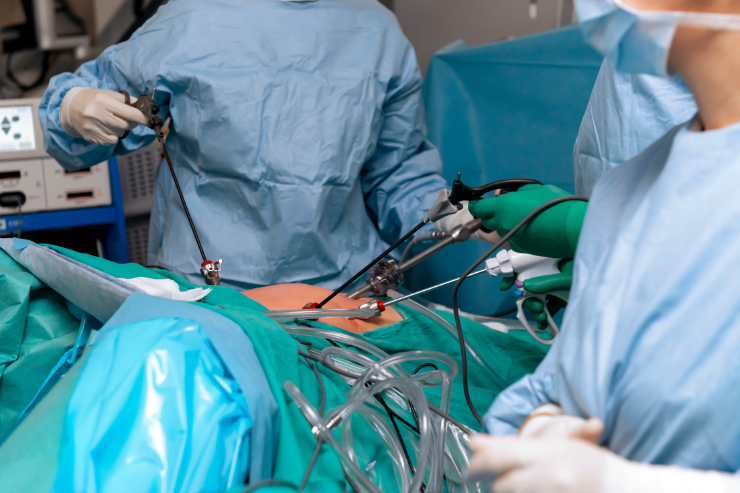Laparoscopic Surgery
- Home
- Treatments
- Laparoscopic Surgery

Laparoscopic surgery, also known as keyhole surgery, is a modern, minimally invasive technique used to diagnose and treat a variety of gynecological conditions. Unlike traditional surgery, which requires large incisions, laparoscopic surgery involves making small cuts in the abdomen. Through these tiny incisions, a laparoscope—a thin tube with a camera and light—is inserted, allowing the surgeon to view the inside of the body on a video monitor.
Why Choose Laparoscopic Surgery?
Laparoscopic surgery offers several significant benefits due to its minimally invasive nature:
- Less Pain: The smaller incisions result in less post-operative pain compared to traditional surgery.
- Quicker Recovery: Patients often experience a faster recovery time, allowing them to return to their daily activities sooner.
- Minimal Scarring: The tiny incisions lead to minimal scarring, which is cosmetically more appealing.
- Lower Risk of Infection: Smaller wounds reduce the risk of infection and other complications.
Conditions Treated with Laparoscopic Surgery
Laparoscopic surgery is a versatile procedure used to address various gynecological issues, including:
- Fibroids: Non-cancerous growths in the uterus that can cause pain and heavy bleeding.
- Endometriosis: A condition where tissue similar to the uterine lining grows outside the uterus, leading to pain and potential fertility problems.
- Ovarian Cysts: Fluid-filled sacs on the ovary that may require removal if they are large, painful, or raise concerns.
- Ectopic Pregnancy: A pregnancy occurring outside the uterus, often in the fallopian tube, which requires prompt treatment to prevent life-threatening complications.
What to Expect During and After the Procedure
Laparoscopic surgery is typically performed under general anesthesia, so the patient will be asleep throughout the procedure. The surgery generally takes between 30 minutes to a few hours, depending on the complexity of the condition being treated. After the procedure, patients may experience some discomfort or soreness at the incision sites, but this is usually manageable with pain relief medication.
Most patients are able to return home the same day or the following day. Full recovery is expected within a few weeks. Detailed post-operative care instructions will be provided, including how to care for the incisions and when it is safe to resume normal activities.
